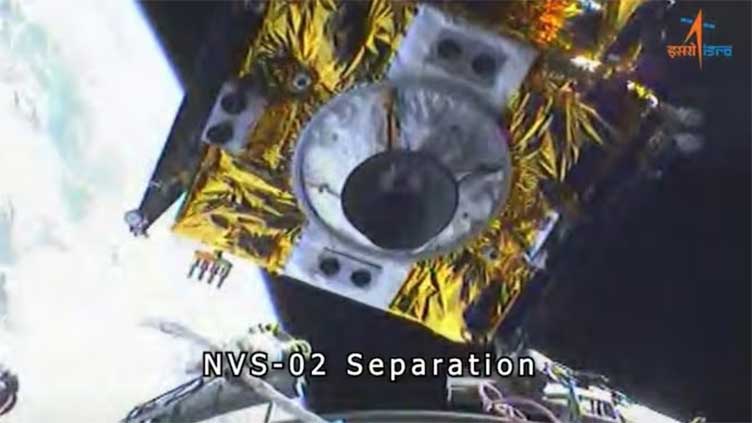Indian's satellite stuck in initial orbit, survival uncertain

Technology
It has not been possible to fire the engine
(Web Desk) - Indian Space agency ISRO's NVS-02 satellite that is meant to serve strategic purposes, remains stuck in its initial orbit and it has not been possible to move it to its intended orbit, ISRO said.
Satellites have to be placed in their precise orbital slots to perform their designated role.
Satellites are moved from one orbit to another by firing their liquid-fuelled engines that burn a fuel and oxidizer combination.
In this case, it has not been possible to fire the engine and raise the satellite's orbit, due to an issue with the valve that releases the oxidizer.
The 2,250kg NVS-02 satellite was launched by a GSLV-Mk2 rocket on January 29th, in what was ISRO's 100th rocket launch mission from the country's premier Sriharikota spaceport.
The satellite was launched into a Geostationary Transfer Orbit (GTO), which is usually used as an initial parking orbit for heavy satellites.
Approximately, the satellite was launched into an orbit that is highly elliptical- 170kms above the earth at its nearest approach (perigee) and 36,500kms at its farthest approach from earth(apogee). Typically, a series of engine firings are performed to place the satellite into a circular orbit, where it is approximately 35,700kms above the earth.
ISRO has stated that the satellite systems are healthy, elaborating that it is generating power from its solar panels and communicating with the stations on earth.
"Alternate mission strategies for utilising the satellite for navigation in an elliptical orbit is being worked out," it was added.
However, it must be noted that GTO is not a perfectly stable orbit and is meant to be only a temporary parking slot, before moving the satellite into a higher orbit.
At the perigee (closest approach to earth), when the satellite is barely 170kms above the earth, it experiences considerable amounts of drag, which gradually pulls the satellite closer to the earth.
Prolonged impact of drag could eventually pull the satellite and make it re-enter the earth's atmosphere, causing it to burn up. The closer the satellite is to the earth, the higher the risk of drag and eventual destruction, especially when the primary engines of the satellite aren't able to steer it away from the earth.


